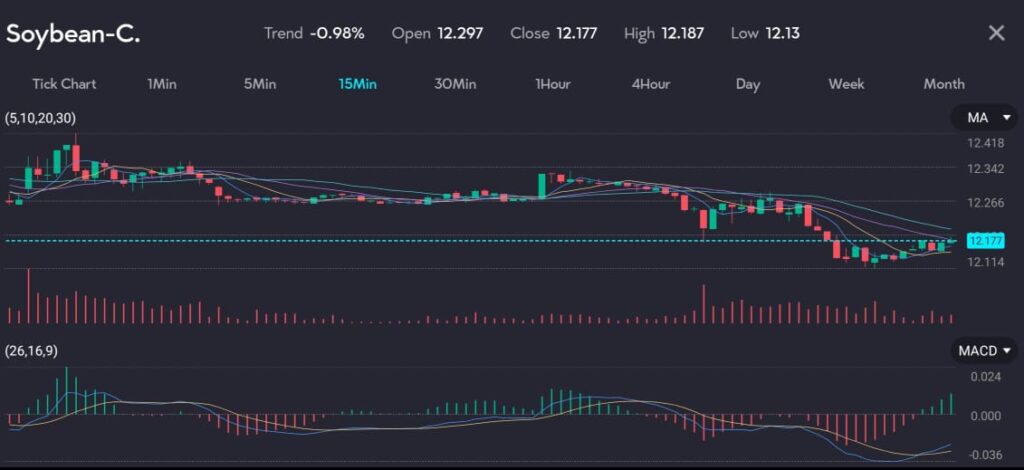Key points
- Soy and corn basis bids have dropped slightly due to increased farmer sales and recent fluctuations in futures prices.
- Barge freight costs are rising, and international demand remains robust, as seen in recent large-scale wheat purchases by Egypt.
Basis bids for soybeans and corn shipped by barge to the U.S. Gulf Coast showed a slight decline on Wednesday. This shift reflects the increased sales by farmers, effectively boosting the supply in the market.
raders have observed that after a spike in futures prices on the Chicago Board of Trade for corn (CN24) and soybeans (SN24), there has been a cooling in farmer offerings. This follows the highest price levels recorded since January

Picture: Soybean prices on decline as seen on VT Markets trading app.
Export premiums and domestic barge offers adjust
The offer for CIF Gulf soybean barges to be loaded in May was marked at 49 cents over the CBOT July soybean futures, marking a decrease of one penny from the previous day, while bids went unquoted.
Meanwhile, corn barge bids for May loading also dropped by one cent, aligning at 40 cents over July futures. This subtle downtrend is consistent across various offerings, with June barges for corn bidding at 43 cents over futures, which is also a decrease by one cent.
Freight costs on Midwest rivers such as the Illinois and the Mississippi at Davenport, Iowa, have either remained steady or risen. This change is primarily due to the heightened demand for empty barges, driven by an increase in grain sales to river elevators by farmers.
More on soft commodities: Supply Worries Set Wheat for Biggest Weekly Gain in Two Years
International dynamics and weather impact
In international news, the Rosario grains exchange in Argentina has revised its corn harvest estimate down to 47.5 million metric tons due to damage from leafhoppers.
In contrast, the soybean harvest estimate remains stable at 50.0 million tons, despite delays caused by rain. Elsewhere, Egypt’s General Authority for Supply Commodities has made significant wheat purchases, with a total of 420,000 metric tons acquired, emphasizing continued strong global demand for grains.
More on global climate: Russian Rainfall Leads to Drop in Chicago Wheat Futures
Anticipated U.S. export sales
Looking ahead to the U.S. Department of Agriculture’s weekly export sales report, the market anticipates reports of U.S. sales of old-crop corn ranging between 600,000 to 1,100,000 metric tons and old-crop soybeans estimated at 250,000 to 600,000 tons.
The wheat sales expectations are set at a maximum of 100,000 tons for old-crop and up to 600,000 tons for new-crop.
Each of these elements plays a crucial role in shaping the daily dynamics of the agricultural commodity markets, influencing trading decisions and market sentiment globally.
With the current fluctuations in soy and corn bids, coupled with international market dynamics, opening a live CFD trading account can provide direct access to trade these commodities based on real-time market data.
Start trading today. Click here to open a live account.









